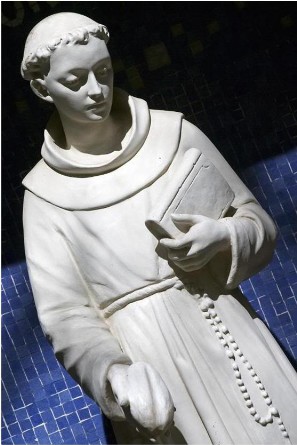History of St. Didacus Catholic Church
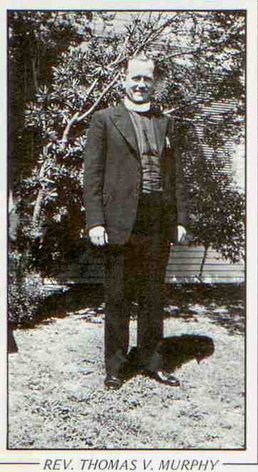
- 1926 – Fr. Thomas Murphy is directed to establish a new church in San Diego, to be named St. Didacus.
- 1927 – Construction of the church and rectory is completed and dedication of St. Didacus takes place in October. The stained-glass windows designed by Fred Wieland are considered priceless today.
- 1939 – St. Didacus School was dedicated on September 17th. It had six classrooms and 160 students. Sister Rita Jane is named the first principal.
- 1941 – The first graduating class of twenty 8th grade students (June 13th).
- 1969 – Fr. Charles Young brings to St. Didacus the Sisters of Mercy from Tuam County, Ireland to staff the school. Sister Cyril becomes the new principal on August 16th.
- 1977 – Monsignor Patrick O’Dowd becomes pastor at St. Didacus. He added the bell tower to our Parish church.
- 1984 – Bishop Leon Maher blesses the new Parish Hall on December 19th.
- 1999 – Father Michael Booth becomes the first of four Michaels, followed by Fr. Michael Robinson, Fr. Michael Baumgardner, and Fr. Michael Sinor.
- 2017 – Fr. Enrique Fuentes becomes pastor of St. Didacus
- 2020 – Fr. Reynaldo Roque becomes pastor of St. Didacus
- 2023 – Fr. Andrew Kunambi becomes pastor of St. Didacus
Who is St. Didacus?
History
His impoverished parents placed him as a child in the care of a hermit living not far from San Nicolás del Puerto Seville – Spain, his native town. Feeling called to the religious life, he applied for admission to the Franciscan Order at the convent of Arizafa and was received as a lay brother. In 1445 he was chosen guardian of the Franciscan community on the Canary Island of Fuerteventura, where in 1446, the Observantist Franciscans founded the Convent of San Buenaventura. There, though it was an exception to the ordinary rules for a lay brother to be made superior; his great zeal, prudence, and sanctity justified this choice.
In 1449 he was recalled to Spain, whence he went to Rome to be present at the canonization of Bernardino of Siena in 1450. At Alatraz he fulfilled the humble office of infirmarian in the convent of Ara Coeli; and his biographers record the miraculous cure of many whom he attended, through his pious intercession. He was finally recalled to Spain and was sent by his superiors to the Convento de Santa María de Jesús in Alcalá, where he spent the remaining years of his life in penance, solitude, and the delights of contemplation. There he died on November 12, 1463 due to an abscess. It was said that it amazed everyone that instead of a foul odor, fragrance emitted from his infection. His body was also rumored to have remained incorrupt, did not undergo rigor mortis and continued to emit a pleasant odor.
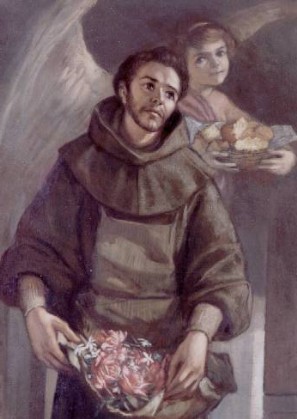
Veneration
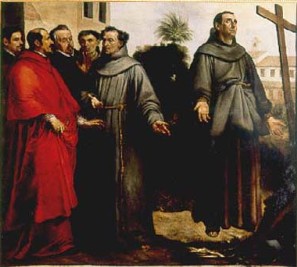
Saint Didacus was canonized by Pope Sixtus V in 1588 and in the General Roman Calendar his feast day was celebrated on 13 November, since 12 November, the anniversary of his death, was occupied by that of Pope Saint Martin I. However, the celebrated his feast day on 12 November,[2] and Saint Didacus’s feast day was finally placed on 12 November for the whole of the Church[3] in the 1969 revision of the General Roman Calendar, which also moved Pope Martin I’s feast day to his dies natalis, 13 April.
Saint Didacus is the saint to whom the Franciscan mission that developed into was dedicated.
The Spanish painter Bartolomé Estéban Murillo is noted for painting representations of Didacus of Alcalá.
Prominent Miracles
On a hunting trip, Henry IV of Castile fell from his horse and injured his arm. In intense pain and with his doctors unable to relieve his agony, he went to Alcalá and prayed to Didacus for a cure. The saint’s body was removed from his casket and placed beside the king. Henry then kissed the body and placed the saint’s hand on his injured arm. The king felt the pain disappear and his arm immediately regained its former strength.
Don Carlos, Prince of Asturias, son of King Philip II of Spain, was of a difficult and rebellious character. On the night of April 19, 1562, he was groping around in the dark after a night spent with some ladies when he fell down a flight of stairs and landed on his head. There he was found the next morning, unconscious and partially paralyzed. He later became blind, developed a high fever and his head swelled to an enormous size. In a moment of lucidity, he asked that he wanted to make a personal petition to St. Didacus. The saint’s body was brought to his chambers. The prior of the convent placed one of Carlos’ hands upon the chest of St. Didacus, whereupon the prince fell into a deep and peaceful sleep. Six hours later, he awoke and related that in a dream, he saw the saint telling him that he would not die. The prince recovered from his brush with death.
